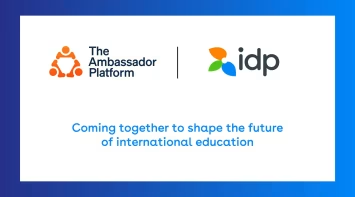“By failing to prepare, you are preparing to fail.” – Benjamin Franklin
Perhaps the most revealing conversations I have with college clients these days are responses to one of my first questions: tell me about your international student recruitment strategic plans? For most, it’s a bit of nervous laughter followed by an admission that there really isn’t one. For a few, they’ll say there’s a planning meeting each year to decide where they’ll travel or what platforms they’ll try, but no coordinated, long-term approach. So, what are we talking about within strategic international enrollment management (SIEM), when we emphasize planning (in our 6 Ps), that seems so difficult to realize?
By definition, implementing a strategic plan requires a number of different elements internationally. As we discussed last month on the importance of perspective, starting your planning shouldn’t move forward until all involved parties understand the current lay of the land externally (the current landscape of international student mobility), internally (how your campus values international students), and how messaging changes as a result.
Take a multi-year view
Most all institutions have three- to- five-year strategic plans at the top level. Get started in your office by constructing your plan along the same timelines your college uses and, ideally, tie into benchmarks outlined by the institutional plan, e.g. increase international student enrollment to 5% of total student population, diversify the international student population to reduce reliance on any one or two countries, or (simply) increase the number of international students on campus (without any specific targets).
Whether your institutional international goals are spelled out or not, the key is to establish SMART (Specific, Measurable, Achievable, Realistic, and Time-sensitive) goals for your plan. We’ve all heard of this method, but how often do we actually do it? Will it take time? Yes. Will it require buy-in to realize? Absolutely. Where do you start? At the beginning, but with the end goal in mind. If you’ve got a five-year goal to have 5% of the incoming class be international and you’re at 1% now, break it down to realistic measures. If you plan to increase new international enrollments by 1% per year (to 2% by year two, 3% year three, 4% year four, 5% year five), you are setting realistic, measurable targets.
Think a multi-level approach
Of course, if you are only responsible for recruitment and admissions while other offices at your institution support pieces of the international student journey—think marketing, alumni affairs, and so on-- you will need to look at your plan’s impact from a variety of levels. From prospective student recruitment to the current student experience, graduating student outcomes, and alumni success stories, all of these elements should be represented in an informed SIEM plan.
The whole enrollment management industry in higher ed began 45 years ago with the release of an article by Jack Maguire, then dean of admissions at Boston College in 1976. This approach was the first time an institution took a data-driven, scientific view on the student journey. Yet for many colleges today, few have well-defined elements of an enrollment management approach for international students.
Many of the challenges in implementing a multi-level international enrollment management strategy rest in where the various offices affecting student life are housed. Admissions may be under a different VP than ISSS, career services/professional development, and alumni/advancement. These last two areas (career services and alumni) are almost always the least incorporated and developed sections of SIEM planning. To be truly successful, any SIEM efforts should involve a minimum of these four areas in coordinated planning or at least an increased awareness among the various offices impacting international student life and the services needed.
Utilize country-level planning
When it comes time to identify specific recruitment initiatives and the countries that you wish to target, there are multiple data sources that should be consulted. Beyond the nations of your currently enrolled students and recent, successful alumni, attention needs to be paid to countries that have seen recent growth in sending students abroad. In these challenging times, some data is more relevant than others. Check out our recent article on what matters most when presented with data overload.
Having a list of countries is a great start, but do students in each of those places want or value the same things in their searches for university study abroad? Probably not. Academic programs of interest, the need for native language information, and potential recruitment opportunities available will vary from country to country. Doesn’t it make sense to prioritize, at least for your top 5 target countries, and develop specific plans that address the needs of each market?
Conduct semi-annual reviews
As Mike Tyson famously said, “everybody has a plan until they get punched in the face.” It’s safe to say 9-11, the 2008 Great Recession, sudden governmental policy changes, and the Covid-19 global pandemic would all qualify as significant punches in the face over the last twenty years. Life happens; plans (must) change. How well-equipped is your office to respond to change?
You’ve certainly had more than several occasions in recent months to address events that can impact international student interest in significantly negative ways. Did your plans change? Were new messages crafted to respond appropriately? Do you have mechanisms in place to conduct semi-annual or quarterly reviews of how your plans are shaping up? Can you make adjustments on the fly?
In the end, the best laid plans are those that are built on flexibility in approach, review, and implementation. As we move forward with our 6 Ps series, we’ll talk next month about the platforms needed to reach your intended audiences.
You might like...

University College Birmingham on the importance of student reviews
Discover how involvement in review collections has influenced UCB's marketing and reputation.

Welcoming A New Chair to the UK Strategic Advisory Board, Professor Lisa Roberts
Vice-Chancellor and Cheif Executive, University of Exeter

IDP to acquire The Ambassador Platform
Coming together to shape the future of international education.



